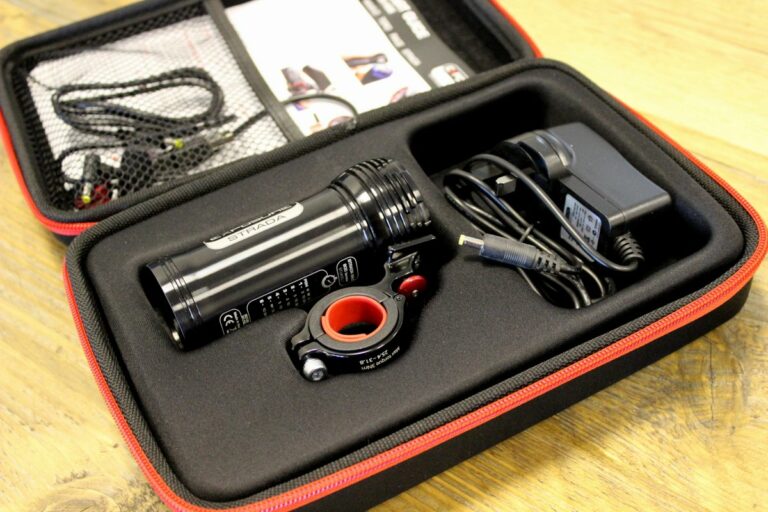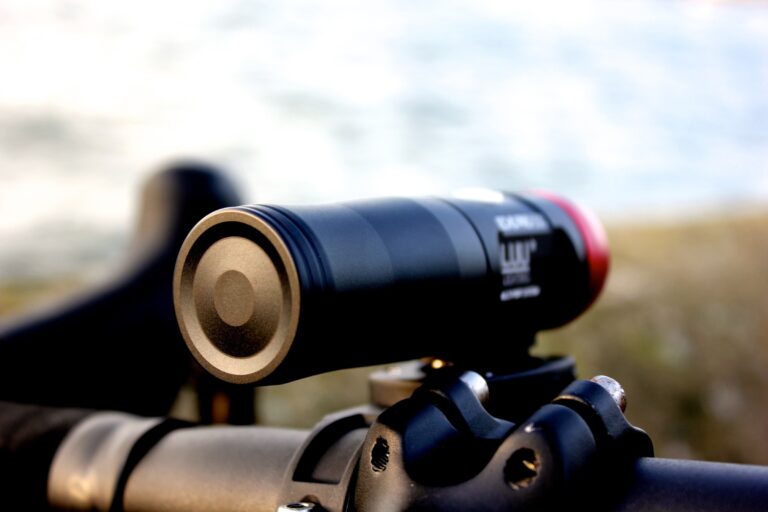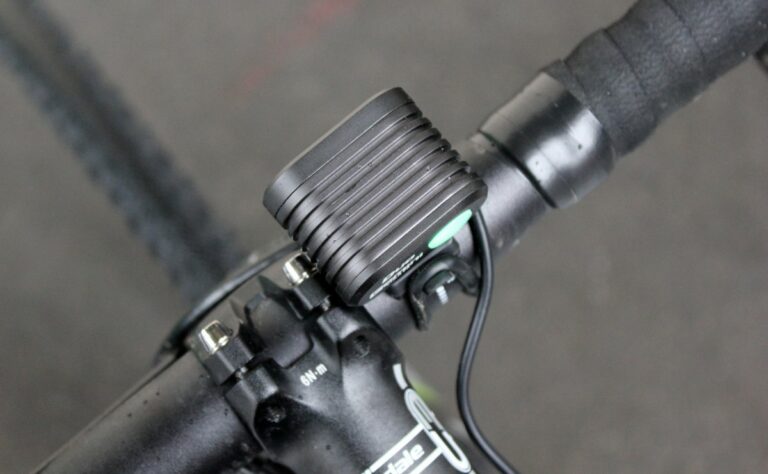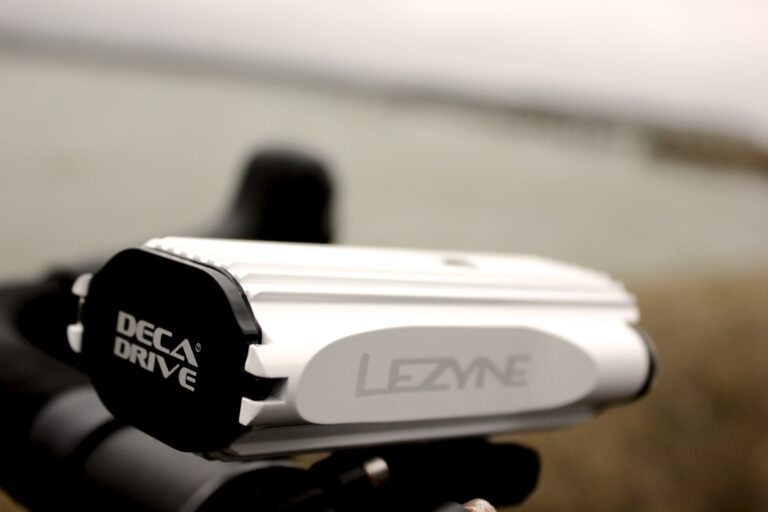The Hope R1 LED headlight is simple to use, robustly engineered, and bright enough at its maximum, 500-lumen output to ride in safety on entirely unlit roads in the darkest conditions.
Simplicity is the Hope R1 LED’s calling card. It is not programmable, and has just six settings, but it is beautifully made, easy to operate, and sufficiently powerful to serve as your sole lighting source.
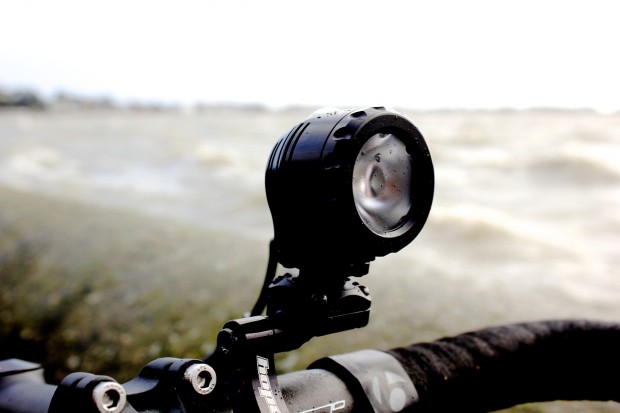
Attaching the RI LED to our test rig was simple enough. Two screws only were required to secure the handlebar-mounted clamp into which the headlight attached with a press-and-twist bayonet fitting. Once in place, the R1 LED stood like a small lighthouse atop the bars, steadfastly lighting the way ahead. In our ‘first look‘, we noted the plethora of attachments supplied, and while we had no need for the elasticated head strap, or helmet mount, others (notably our fat-tyred friends) might.
The battery pack proved similarly easy to attach, tethered with its own stretchable strap, and secured with a Velcro patch. We positioned it below the top-tube at its junction with the headtube. We were surprised by the absence of a fabric pouch, but the plastic casing that surrounds the cells proved its worth on several rain-soaked rides. We should point out that the battery pack supplied with our test unit was the standard, 2600mAh unit. A 5200mAh unit is also available, supplied with the ‘Epic’ package, or sold separately, and able to double run times (more of which below).
To return to the light. The thumb-sized, top-mounted switch that controlled output was tactile and simple to use, even in gloves, and gave off its own unmissable glow in the darkest conditions, which made it easy to locate. The CNC machined, T6 aluminium housing is a thing of rugged beauty and fabricated with all of Hope’s trademark craftsmanship. It came under no greater attack than constant rain during our acquaintance but gave every appearance of being tough enough to shrug off the occasional assault from road debris.
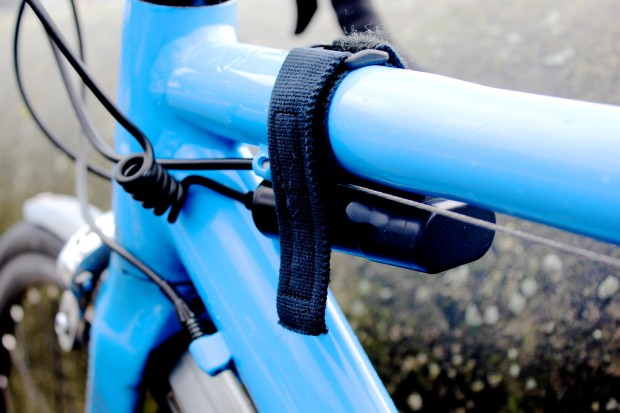
Hope have divided the R1’s outputs into two groups of three, and accessing the Race and Trail sequences was simple enough: a quick press for the former, and a press and hold for the latter. The Race sequence was the one we used most, offering three solid outputs, culminating in the maximum 500-lumen beam, more of which below. The Trail sequence, with its ‘Low’ (60 lumens) and ‘Ultra Low’ (25 lumens) outputs, we accessed only for the ‘Flash’ setting, which was effective, but lacked the rapid fire intensity of some we’ve tested, notably the LUU Echo Torch Pro.
The ‘Medium’ (160 lumens), ‘High’ (310 lumens), and ‘Max’ outputs of the Race sequence were those we used more frequently. While the bright, brighter, brightest format made ‘dipping’ the beam from its maximum output a one-touch procedure, the two pushes required to return to full power was not always practical. The ‘Medium’ setting was not powerful enough to illuminate unlit roads sufficiently, and the two button presses required to return to 500 lumens frequently felt like one too many, especially when down on the drops and descending into the darkness that remained once oncoming traffic had passed.
Our use of the ‘High’ setting was limited. We found the ‘Medium’ mode sufficient on roads with street lights, and, as previously described, used it as a ‘dip’ from the maximum output on unlit rural routes. That said, the ‘High’ setting is a reassuring feature to have aboard, producing an output bright enough to command attention around town and perhaps offering a fall back position from the ‘Maximum’ to those concerned about burn times. The R1 selects this mode automatically when battery life is nearing its end; a feature Hope calls ‘energy preserve’.
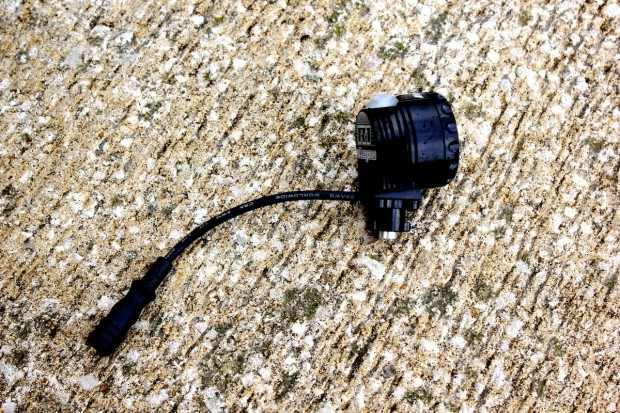
Hope’s two-hour burn time claim for the maximum output proved largely accurate, although on none of our missions did we operate the maximum setting for the entirety of the ride. ‘Dipping’ is a common courtesy, to be observed by the cyclist as well as the motorist, in our opinion (although always after the motorist has dipped – you have more to lose than him if he hasn’t seen you) and the aggregation of these short intervals on the ‘Medium’ setting was perhaps significant.
Post-ride charging was easily accomplished. The separate battery pack proved easy to remove while leaving the headlight in place, thanks to a robust cable that separated lamp from power source with a firm, but satisfying pull. The leisure cyclist will have the option to leave the lamp in situ, while the commuter will find little difficulty in carrying it with him, thanks to the previously-described push-and-twist bayonet mount, if (perish the thought) the bike is left in a public space.
The battery charges from a three-pin, wall socket charger equipped with a warning light that glowed red or green to indicate a flat/partially charged battery, or one ready for use. Hope claim a three-hour charge time for its 2600mAh battery, which we’re prepared to accept. Our charging regime was one of plug-in and forget: a happy state of affairs no doubt encouraged by the ease with which the battery could detached at the end of the ride.
Conclusion
The Hope R1 LED headlight is a solid and well engineered unit with a bright beam that at its maximum setting will light the way ahead safely on unlit roads. It’s worth noting that Hope distinguish between ‘measured’ and ‘generated’ lumens, and that the 500-lumen headline output is the former; the latter is 620 lumens. Kudos to Hope for playing with such a straight bat. Set to its maximum, the R1 was the equal of more ‘powerful’ lights we’ve tested, despite its single LED set-up.
The separate battery pack divided opinion among riding buddies. Integrated units are increasingly the standard. Hope doubtless will have sound reasons for continuing to separate lamp from battery – the beautiful bayonet fitting allows the headlight to be swapped easily from helmet mount to handlebar, for example – and it all worked with enviable simplicity, but aesthetically left a little to be desired. To dismiss the R1 LED on such grounds, however, would be short-sighted – the last thing this powerful little unit could be accused of.
Price: £150 (standard); £200 (‘Epic’); £60 – spare battery
Colour: black
Website: Hope

